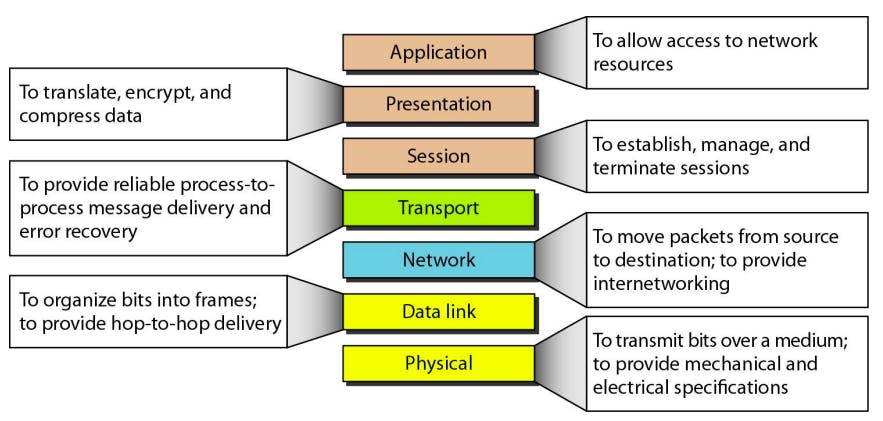OSI (Open System Interconnection Model) is a logical model to communication between systems. OSI describes 7 layers that computer systems use to communicate with each other.
OSI Model Explained: 7 Layers of OSI Model
We will describe OSI layers "Top Down" from Application layer, down to physical layer.
Application Layer
The Application Layer in the OSI model is the layer that interact with the users. It is used by the end-user software such as Web browser, E-mail. The Application layer has two part : Client Part and Server Part.
- Client part - Client are the ones who are consuming these resources and making the request to the server.
- Server part - A server is basically a system that control the website you are hosting. When the client make a request to the server, the server receives information directly from users and sends the response based on the information.
The Application Layer protocol allow software to send and receive information and meaningful data to users. A few are HTTP(Hypertext Transfer Protocol), FTP(File Transfer Protocol), SMTP(Simple Mail Transfer Protocol).
Presentation Layer
The presentation layer prepares data for the application layer. It defines how two devices should encode, encrypt, and compress data so it is received correctly on the other end. The presentation layer takes any data transmitted by the application layer and prepares it for transmission over the session layer. The goal of this layer is to take care of the syntax and semantics of the information exchanged between two communicating systems.
Session Layer
In Session Layer a Session is created to connect two computers or other network devices. It is responsible for opening sessions, ensuring they remain open and functional while data is being transferred, and closing them when communication ends.
Transport Layer
Data transferred between one computer to another is done by using Network Layer. Transport Layer is a layer that lies over devices. The role of the transport layer is to take the data from Application Layer and vice versa.
The transport layer takes data transferred in the session layer and breaks it into “segments” on the transmitting end. It is responsible for reassembling the segments on the receiving end, turning it back into data that can be used by the session layer. Transport Layer uses TCP(Transmission control protocol) / UDP(User datagram protocol) and IP(Internet Protocol)
Network Layer
Network layer is the fourth layer in the OSI model of computer networks. It’s main function is to transfer network packets from the source to the destination. It is involved both at the source host and the destination host. At the source, it accepts a packet from the transport layer, encapsulates it in a datagram and then deliver the packet to the data link layer so that it can further be sent to the receiver. The network layer uses network addresses (typically Internet Protocol addresses) to route packets to a destination node.
Data Link Layer
The data link layer is responsible for the node-to-node delivery of the message. In other words the data packets that we receive from the network layer, it breaks up packets into frames and sends them from source to destination over a Physical Layer.
This layer is composed of two parts—Logical Link Control (LLC), which identifies network protocols, performs error checking and synchronizes frames, and Media Access Control (MAC) which uses MAC addresses to connect devices and define permissions to transmit and receive data.
Physical Layer
Physical layer in the OSI model plays the role of interacting with actual hardware and signaling mechanism. Physical layer is the only layer of OSI network model which actually deals with the physical connectivity of two different stations. This layer defines the hardware equipment, cabling, wiring, frequencies, pulses used to represent binary signals etc.
Summary of Layers

